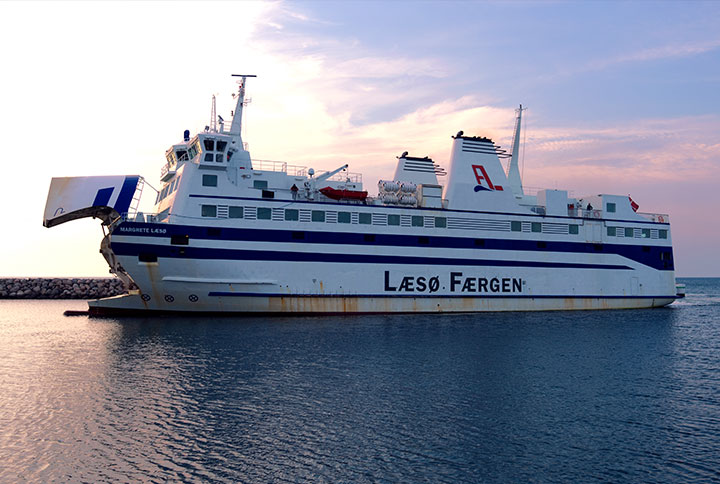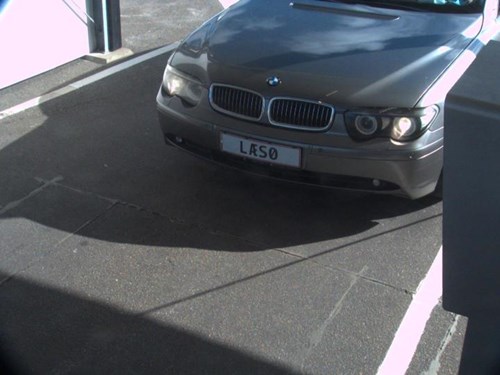Smartport Solution by Adaptive Recognition Allows for Hassle-Free Boarding at Ferry Terminals in Denmark

Regardless of the time of the year, Læsø ferries operate on a tight schedule. Each ship has about 20 minutes to drop off passengers and vehicles and take on those waiting to board. Unfortunately, that time is often not respected because passengers must purchase their tickets in advance by visiting a booking website.
Checking manually whether vehicle owners have purchased their tickets is labor-intensive. Moreover, manual controlling of purchased tickets is nearly impossible during rush hours and in high season. Because of the slow ticket purchase and control process, ferries cannot depart and arrive in time, resulting in delays that make visitors and islanders angry.
For this reason, the Læsø municipality decided to upgrade the existing booking system using advanced automatic number plate recognition (ANPR) technology also applied at smartport solutions.
Solution
To accelerate the boarding process and turnover time as much as possible, the Læsø ferry company opted for a pay-by-plate solution, which has been successfully applied in other situations, such as collecting traveling fees on toll roads.
Passengers arriving by car are admitted on board but not before an ANPR-capable camera captures their license plates at the boarding station. Once they disembark on the other side, the booking system registers the completion of the voyage and auto-generates an invoice to be paid subsequently within a predetermined time. If passengers travel on the ferry frequently, the system can automatically deduct the amount from their credit cards or bank accounts.
Additional Benefits
In addition to significantly accelerating the whole boarding process, there is another crucial benefit to applying the smart pay-by-plate system at the Læsø ferry terminals: cost-effectiveness. Vehicles do not have to wait for their tickets to be processed, so ferries spend much less time in ports, which reduces fuel consumption.
Since the ferry terminal staff can monitor the boarding process instead of ticket validation, they have a better way of dispersing the vehicles between the ferries and planning the schedule. In other words, the faster turnover time and less fuel consumption save money, which can be better spent on adding more features to the boarding system or even on an entirely new ship to accommodate the tighter schedule better.

Systems Used
During the upgrading from the old ticketing system to the pay-by-plate-based one, the Læsø municipality decided to turn to Adaptive Recognition and purchased a total of six SmartCAM ANPR cameras – three in each port on the Frederikshavn–Læsø route. These cameras are equipped with a separate PC running the ANPR on board, powered by the industry-leading Carmen® engine. This means that ferry operators receive ANPR-processed data that allows them to send the travel invoices to the vehicle owners after being compared with the appropriate vehicle registry. And the system is so precise that it can recognize and identify even those cars with customized license plates.

The six SmartCAMs are also hooked up to induction loops built under the road right before the entry gates to the ferry ports. Given that the induction loop sends an instantaneous signal to the cameras when the vehicle passes over it, the camera snaps the necessary ANPR-ready image right when it’s needed, even in less-than-ideal weather and light conditions. Additionally, these loops can also measure a vehicle’s length, width, and weight, allowing ferry operators to determine the most optimal way of filling up the ship’s cargo bay.
Future Plans for the Læsø Model
Seeing how well the Læsø model performs regarding the speed and effectiveness of the boarding process, there are plans already to upgrade a multitude of ports across Scandinavia. Ferry companies that decide to leverage the benefits of smartport solutions in the future will enjoy the fourth generation of ANPR cameras including Adaptive Recognition’s latest, most advanced model, Vidar.
While being as powerful as its predecessor, SmartCAM, Vidar also comes with additional features. One is the built-in laser trigger that can fully replace induction loops and can be just as effective – even without breaking the asphalt to perform the costly and lengthy installation works. To make things more convenient, Vidar models can also be ordered with on-board ANPR – powered, of course, by Carmen® – or without it. In the latter case, integrators can decide whether to integrate the camera into their traffic monitoring system or rather have the necessary data processed with the help of ANPR Cloud. And if that’s not enough, Vidar models can be ordered with not one but two fully-fledged cameras for an even better traffic monitoring experience.
As such, Vidar’s versatility – combined with its sturdiness – makes it ideal not just for access control systems like the boarding system of the Læsø ferry but for complex smartport solutions and other traffic monitoring projects too.
Find Out More
To learn more about this specific project and how a similar solution can be adapted to your business needs, contact our experts, Alan Tofte and Per Sohølt. To find out more about Vidar and if it’s ideal for your project, get in touch with us here.
About Adaptive Recognition
_logo.jpg) Adaptive Recognition is a group of creative minds, developing and manufacturing AI-based image processing technology, for the traffic, security, and identity industries.
Adaptive Recognition is a group of creative minds, developing and manufacturing AI-based image processing technology, for the traffic, security, and identity industries.
Adaptive Recognition's first major successes came with our globally market-leading Carmen® ANPR (Automatic Number Plate Recognition) product, which is capable of automatically recognizing and reading images of car license plates. This was followed by introducing various standardized codes, which are used, among other things, in shipping or printed on ID documents like passports.
The small startup transformed into a professional international company with locations in Denmark, the USA, Asia-Pacific, Central-Europe, and Singapore, with 300+ employees and 30+ representative partners worldwide.






Comments
There are no comments yet for this item
Join the discussion